A sustainability action plan is crucial for businesses. It embeds environmental, social, and economic sustainability into daily activities. But how are companies getting on with their sustainability efforts?
Strategy at the core
A sustainability strategy acts as a guiding map with clear objectives and precise action steps to minimize adverse effects on the environment while maximizing lasting advantages for both the company and society at large.
By adhering to global sustainability benchmarks, organizations manage ESG risks and also enhance their standing among various stakeholders, including clients, shareholders, and authorities.
These sustainability initiatives foster a culture of effectiveness and purpose within the organization, which also results in reduced expenses and enhanced competitiveness in markets increasingly demanding these efforts from the companies they patronize.
1. Cascades
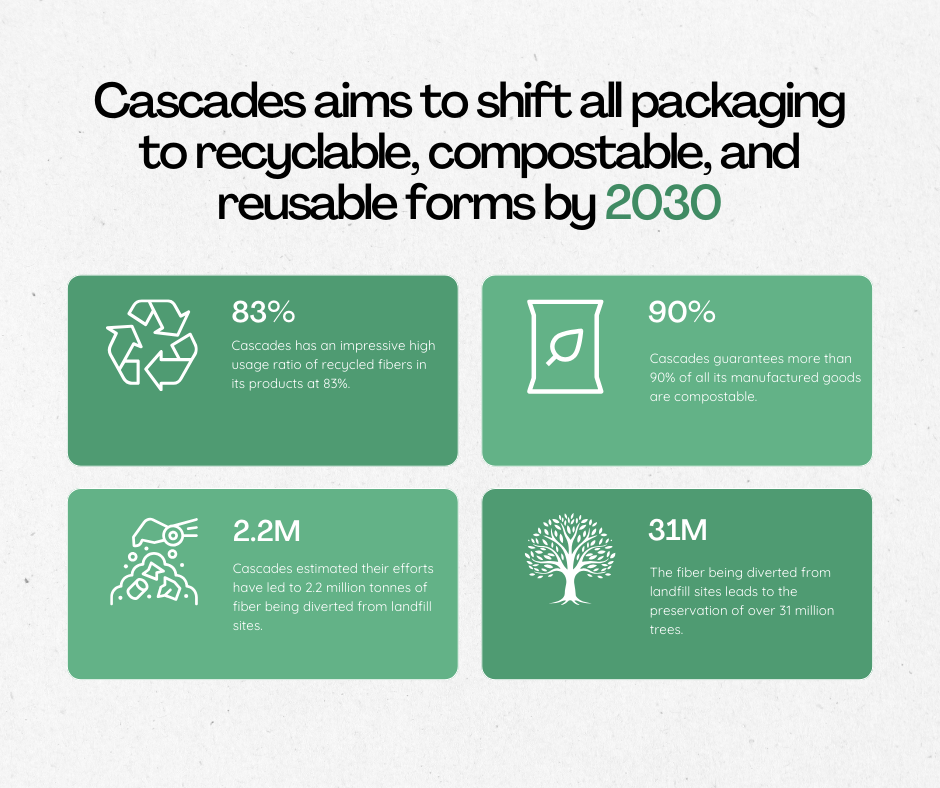
Packaging and hygiene products producer Cascades Inc.’s sustainability action plan recently received accolades for its forward-thinking aspects, which aim toward a circular business model. The company has focused on building a legacy on their dedication maintaining a circular supply chain for their products and packaging.
For the 5th year in a row, Cascades was ranked among the top 100 most sustainable companies in the world.
The company’s investment policy included proactive investments aimed at sustainability goals, with perhaps the most impressive point of this plan being a target to shift all packaging to recyclable, compostable, and reusable forms by 2030. Amidst the growing urgency to combat climate change, this bold vision reflects Cascades’ resolute application of its circular economy philosophy and waste reduction practices.
Furthermore, Cascades intends to be a pillar of North America’s recycling sector with 17 sorting facilities, while having an impressive high usage ratio of recycled fibers in its products at 83%. Through its guarantee that more than 90% of all the goods manufactured are compostable, it’s estimated that 2.2 million tonnes of fiber is diverted from landfill sites, which leads to the preservation of over 31 million trees. Cascades is a leader in demonstrating a strong commitment to the environment and to society.
2. IKEA
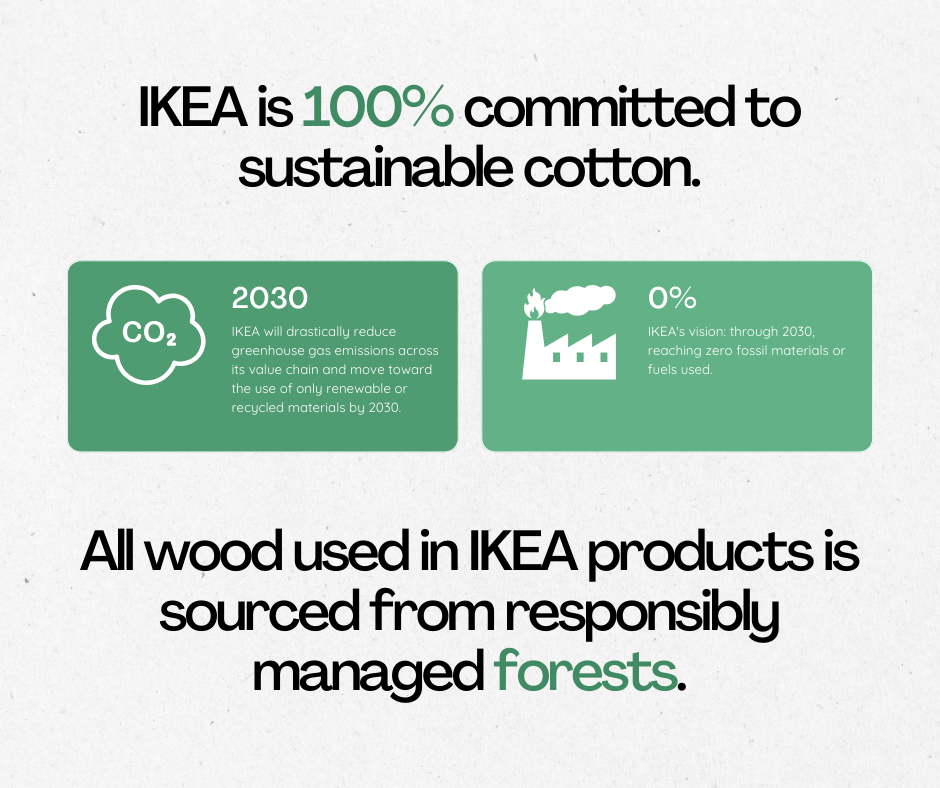
IKEA’s sustainability strategy is based on three fundamental pillars: living sustainably and healthfully, focusing on climate action and fairness, and safety first. Applying several programs and strategies, the “IKEA Concept” aims to expand the scope of its actions and expand the coverage of sustainability action through 2030 – to reach more than one billion people around the world.
It’s a broad-ranging program that may encourage a huge section of the global population to adopt sustainable lifestyles and minimize the adverse impacts of their activities.
IKEA acknowledges the increasing importance of the contribution of families to the health, environment, and resilience of today’s world. For instance, these groups are helping to take care of our environment by working towards the reduction of pollution and carbon emissions through promoting energy and water conservation, the use of renewable energy sources, as well as suggesting sustainable means of nutrition.
Among their efforts, IKEA is are 100% committed to sustainable cotton ensuring the cotton they use is grown with less water and chemicals, helping areas that are subject to erosion and water scarcity.
The company has also prioritized drastically reducing greenhouse gas emissions across the IKEA value chain and moved toward the use of only renewable or recycled materials by 2030.
All wood used in IKEA products is also sourced from responsibly managed forests which do not contribute to deforestation.
On top of that IKEA has become very popular by developing products that are not just the cheapest but also the greenest, hence people are observing IKEA’s green credentials and making some effort to follow their lead.
IKEA’s vision: through 2030, reaching zero fossil materials or fuels used. This should be a major contributor to the reduction of global warming.
3. Pact
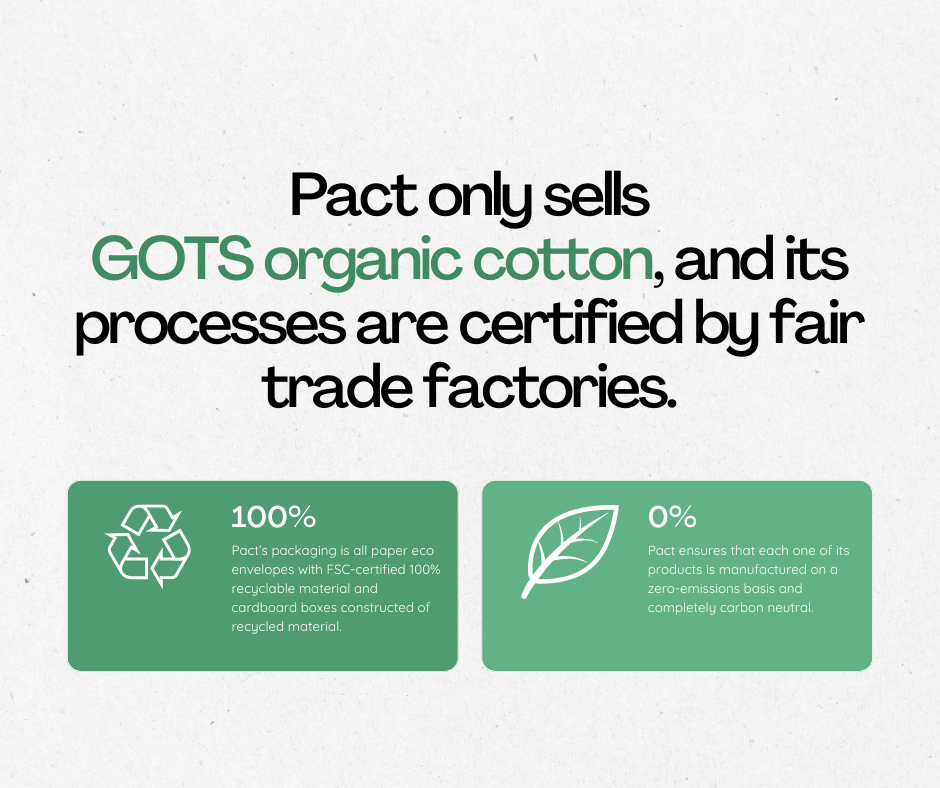
Pact developed a sustainability strategy which is based on organic cotton, fair trade practices, and environmentally smart shipping. Its initial purpose was to be an underwear brand, which has extended into men and women’s clothing.
Being a label that offers all kinds of organic cotton with tops, dresses, and lounge wear, it now ensures it sells only GOTS organic cotton, and that its processes are also certified by fair trade factories.
A notable example of their circular fashion initiatives is their partnership with the “Give Back Box” program, whereby people can use free shipping labels distributed by Pact to send on their used clothing on to multiple charities.
Through teaming up with SimpliZero and organizations similar to that, Pact ensures that each one of its products is manufactured on a zero-emissions basis and completely carbon neutral.
Packaging with Pact is all about paper eco envelopes with FSC-certified 100% recyclable material and cardboard boxes constructed of recycled material. All in all, Pact’s sustainability plan consists of fair-trade alternatives, carbon emission offsetting and ecologically sustainable packaging, showing the company’s involvement in the environmental and societal responsibility of the fashion business.
4. Novo Nordisk
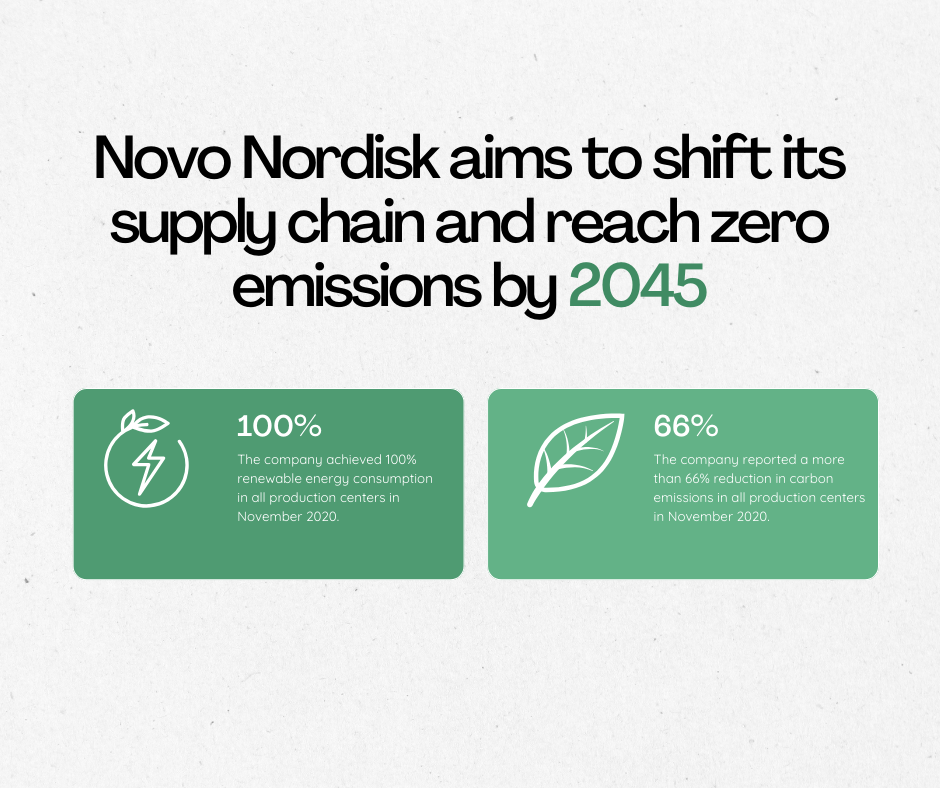
A pharmaceutical giant, Novo Nordisk manifests its dedication to the environment through an innovative program called “Circular for Zero”, which tries to get Novo Nordisk to a point where the company’s activities pose no harm to nature.
The company reported a more than 66% reduction in carbon emissions and progressed even more after achieving 100% renewable energy consumption in all production centers in November 2020.
Aware of the magnitude of the sustainability issue, Novo Nordisk emphasizes that it will shift its supply chain and zero emissions out by 2045 through a set of bold ambitions, justifying its unalloyed dedication to sustainability.
Novo Nordisk not only has to face environmental issues but also solve the matter of equal access to treatment and affordable treatment for all patients who are in dire need with the help of their company.
The company’s “Changing Diabetes® in Children” Program is global and in almost 380 hospitals in low and middle-income countries, the initial goal being to create a platform where children with diabetes would have access to the right medical treatment.
Collaborating with UNICEF as a partner helps the company build an operations strategy concerned with identifying environmental factors. The activities demonstrate how Novo Nordisk encompasses the whole approach to disease prevention.
5. Clif Bar
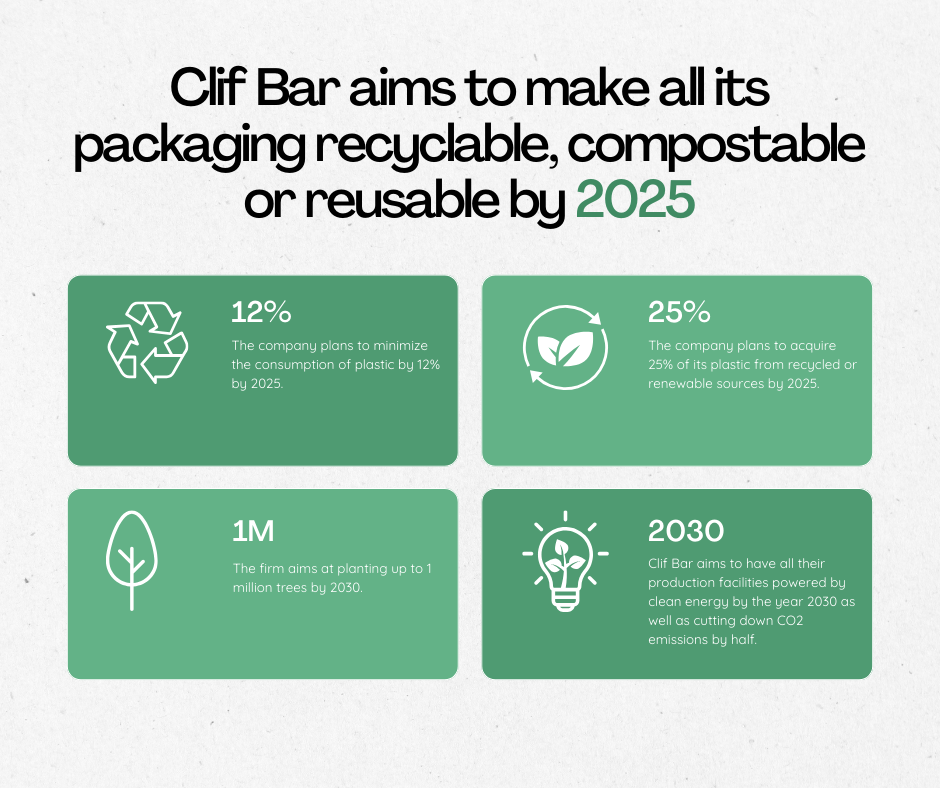
Clif Bar implements CSR through various environmental initiatives including waste reduction, using renewable energy sources and campaigning for protecting our forests. Moreover, Clif Bar aims to make all its packaging recyclable, compostable or reusable by 2025, and this process is going to begin with the classic Clif Bar packaging.
Reducing plastic usage stands as the main principle followed by the company, and it plans to minimize the consumption of plastic by 12% and to acquire 25% of its plastic from recycled or renewable sources by 2025. In addition, Clif Bar has committed to remove 1000 tons of plastics from the ocean within the specified years.
Besides that, Clif Bar has moved towards the harnessing of renewable energy which is one of the company’s main objectives, and to have all their production facilities powered by clean energy by the year 2030 as well as cutting down CO2 emissions by half.
The firm also aims at planting up to 1 million trees by 2030.
Clif Bar’s process-based approach in its value chain is an indicator of the organization’s determination to make the whole food system sustainable – from sourcing raw materials to the final product delivery – as healthy as possible.
Sustainability with purpose
The path to sustainability for companies no matter small or large is by way of combining purpose and faithfulness. It’s clear that sustainable management can be applied not just in the operations of business, but also can cover waste disposal, renewal of energy sources, procurement of raw materials, and reduction of plastic use.
These brands are serving as leaders, demonstrating how companies can start modifying their business practices by focusing on environmental issues and building a portfolio of green activities to create this future. The promotion of sustainability is not solely a decision, but also an obligatory commitment. Its advantages are not only for the company and its customers, but for the entire global community as a whole.


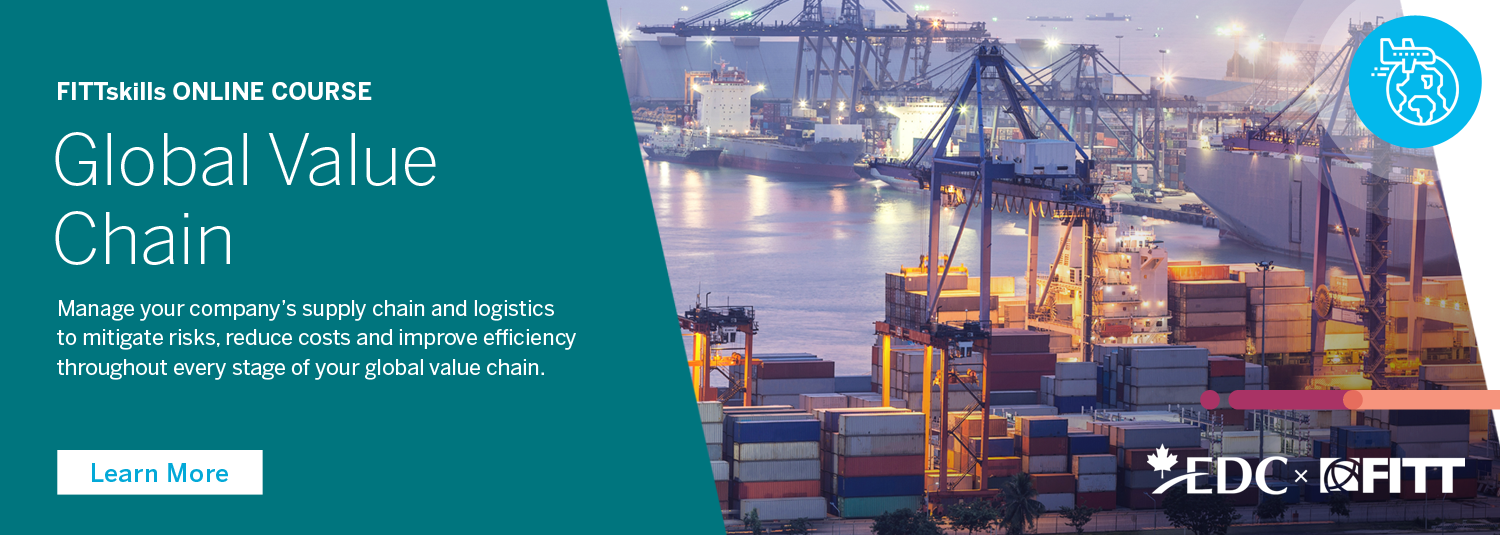




I am interested in more and more sustainable.